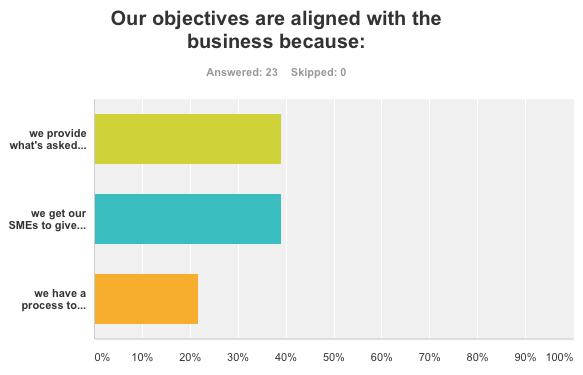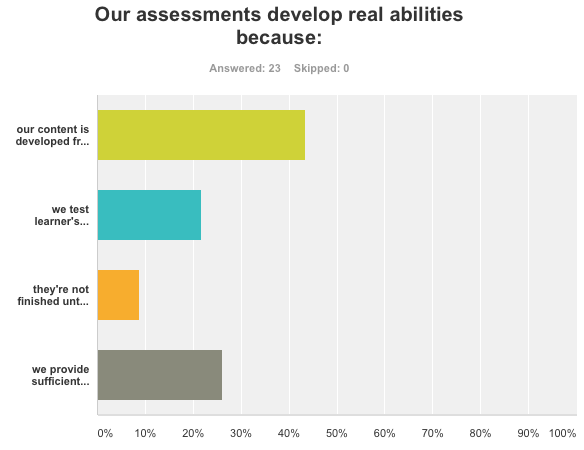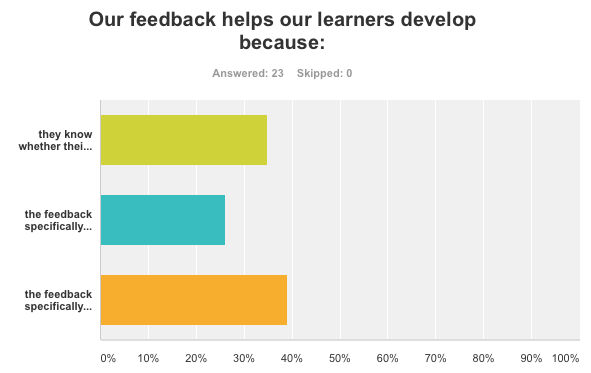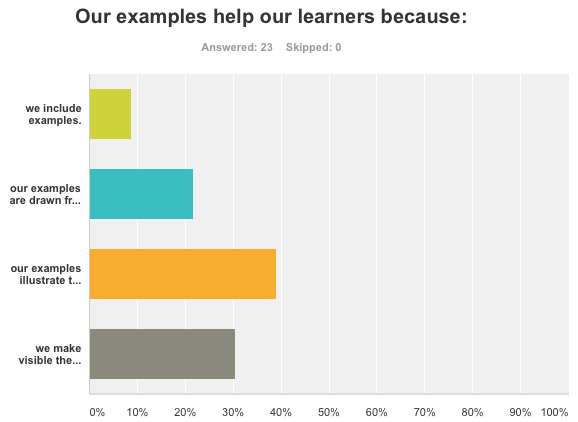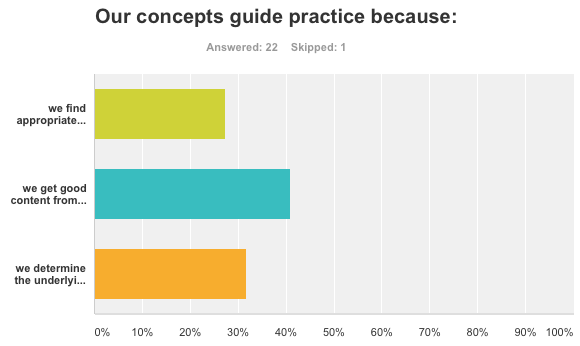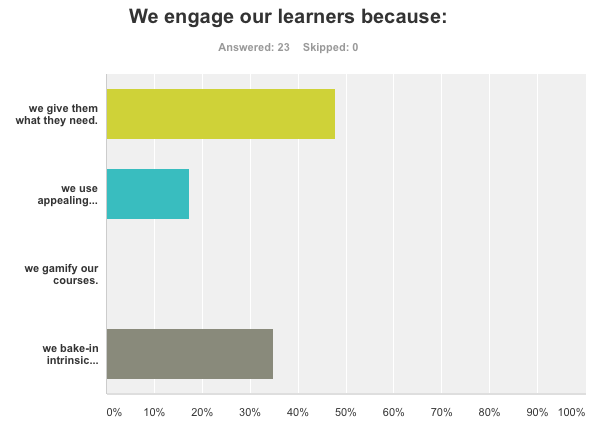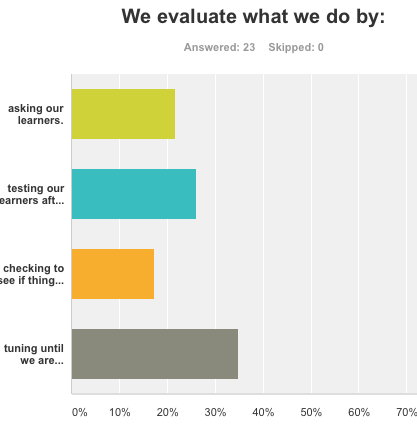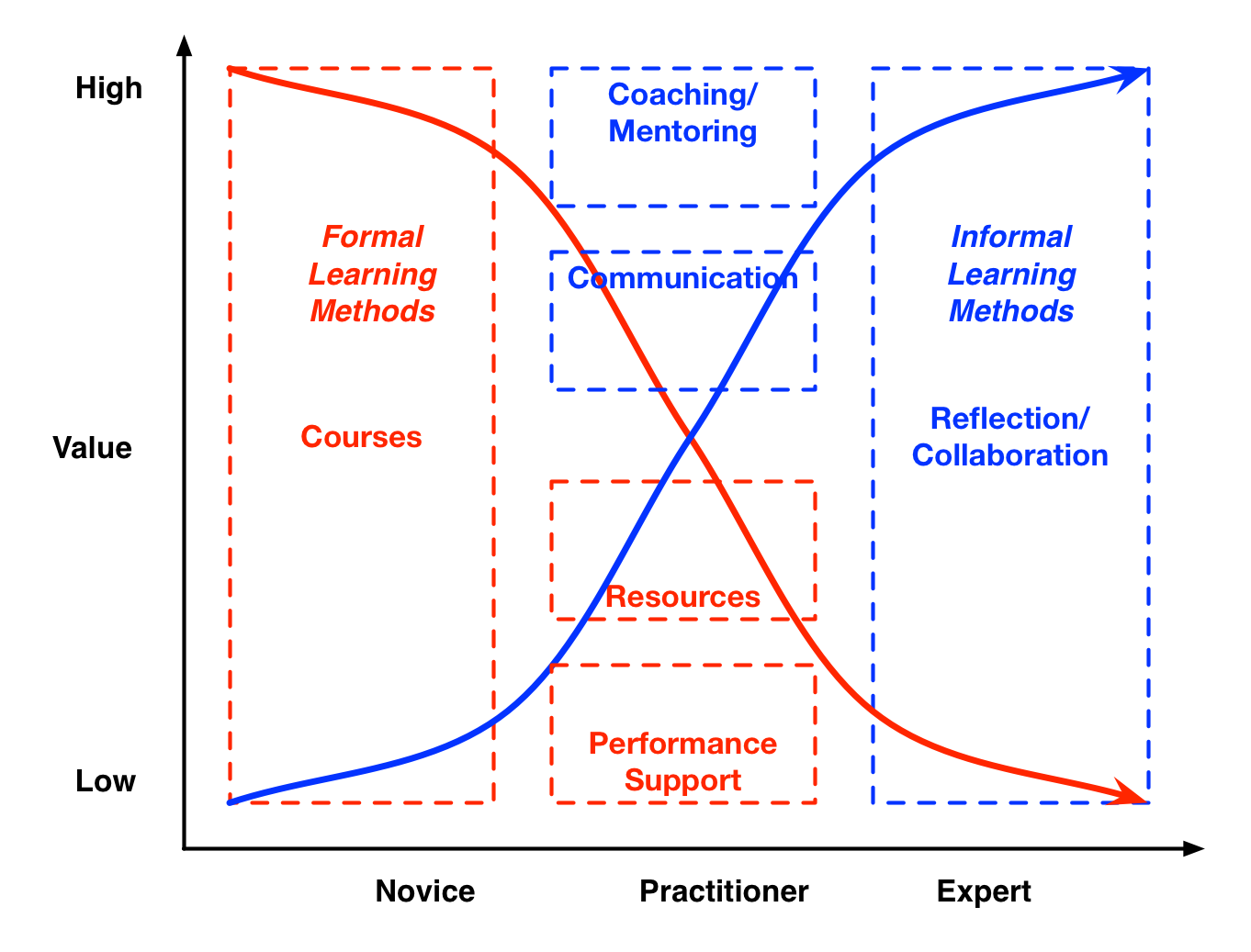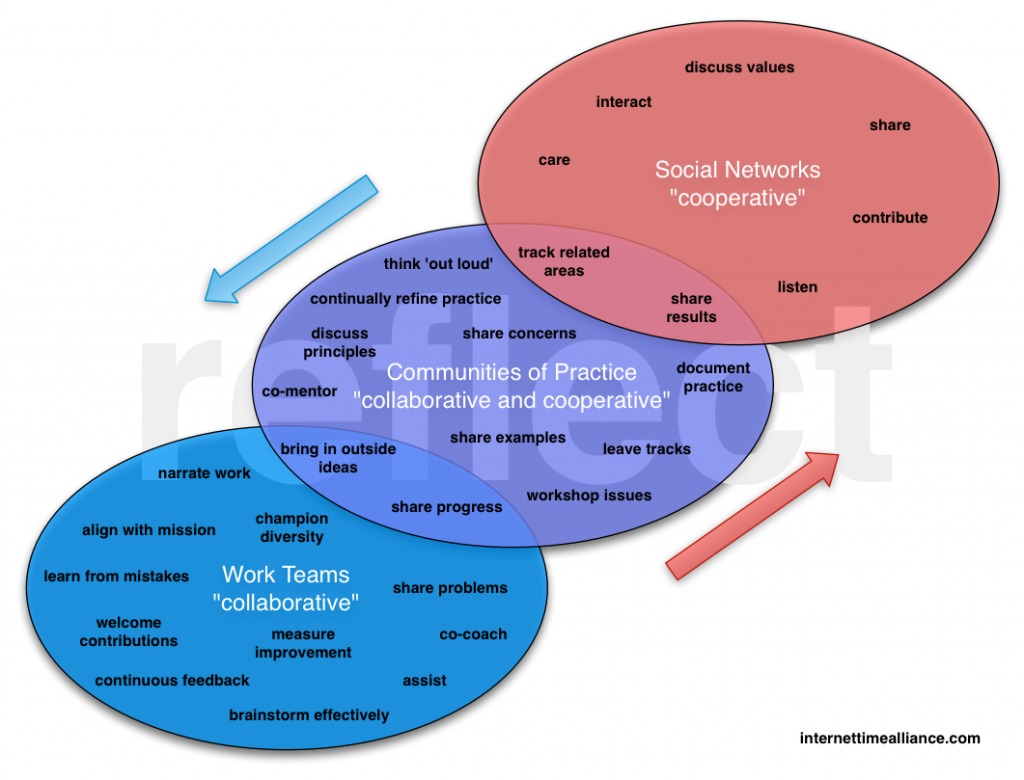Organizational learning processes – across L&D, Executive Development, Leadership Development, and more of the roles in HR and talent management – are largely still rooted in both industrial era models and myths. We see practices that don’t make sense, and we’re not aligned with what we now know about how we think, work, and learn. And this is a problem for organizational success. So what are some of the old practices compared with what we now know? No surprise, I created a diagram (a table in this case) representing just some of the tensions:
I won’t elaborate on all of these, but I want to make two points. The first is that I could’ve gone on; both in breadth and depth. That is, each of these unpacks with many implications, and there are more ways organizations are not aligned with what’s know about how people work. The second point is that there are known ways to address these problems. Systemic ways to get the combined benefits of more effective output and more engaged people. Not surprisingly, treating people in ways that reflect their inner nature is more rewarding for them as well as more successful for the organization.
I’ve argued in the past that we should treat learning design seriously, with the depth of rocket science applied as a learning engineering. Similarly, we should be basing our organizational learning designs – our strategies, processes, and policies – on what’s known about people. That’s not being seen often enough. It’s time for organizational learning to move into the information age, and start performing like professionals. The action is at the coal face, not in the comfort zone. There’s good work to be done, and it’s time to do it. Let’s go!


